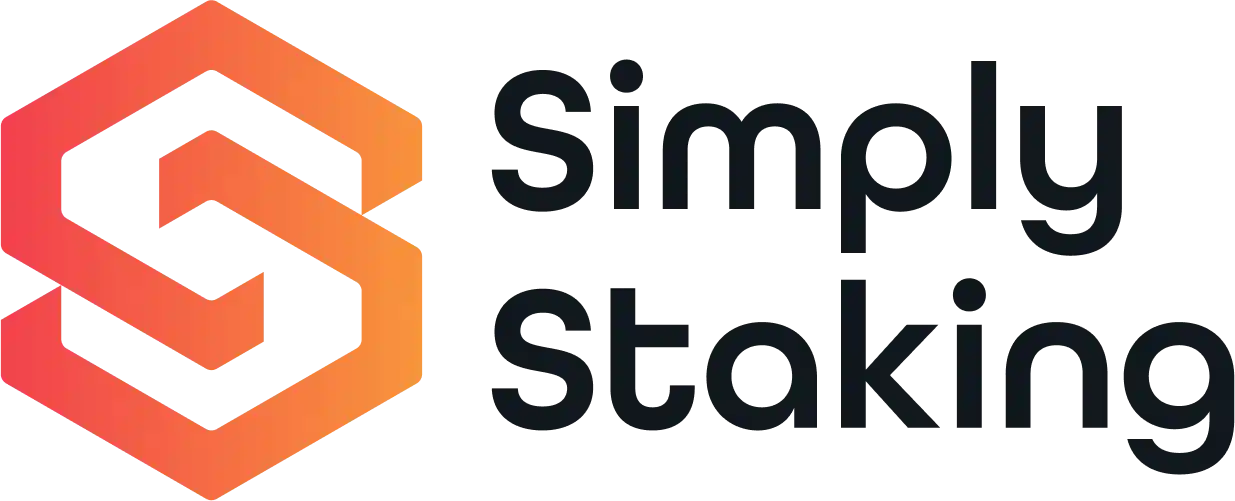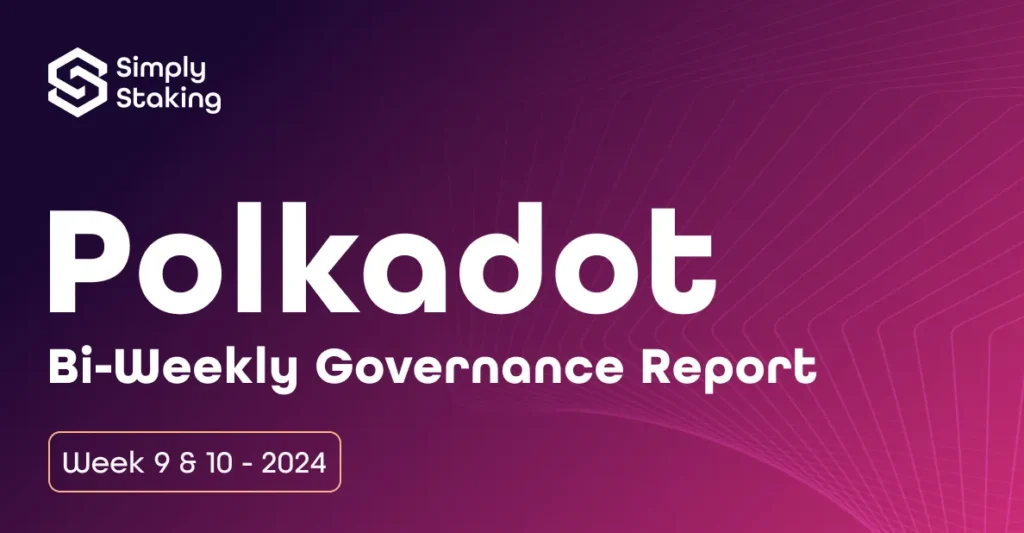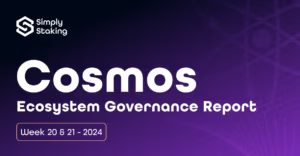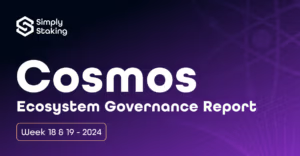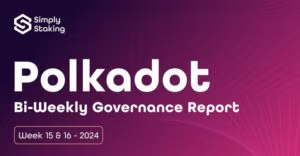Table of Contents
- Referendum 507: Polkadot Community Workspace NYC by Transistor
- Referendum 514: Conor Daly — 2024 Indianapolis 500 Sponsorship
- Referendum 508: Polkadot sponsorship for LIFT Learning — A Fenasbac + Central Bank of Brazil initiative
- Referendum 526: #40 Bounty proposal: Business Development Polkadot in Spain & Andorra
- Referendum 506: The Decentralized Future of Business Development for Polkadot
- Referendum 502: Treasury Proposal: Futarchy, a New Signal Generating Tech for Polkadot Governance

Referendum 507: Polkadot Community Workspace NYC by Transistor
This referendum seeks to establish a Polkadot Community Workspace in New York City, requesting $2,105,000 from the treasury, with the intention to create a hub for Polkadot teams and community members to foster collaboration, business development, and networking in a key global finance and technology centre. The workspace is intended to serve as a physical presence for Polkadot in North America, facilitating engagement with enterprises, investors, and the broader tech community.
Community feedback on this proposal has so far been varied, with some expressing skepticism about the necessity and effectiveness of investing a significant portion of Polkadot’s treasury funds into a physical workspace. Concerns have been raised about the proposal’s cost, with suggestions that the funds could be more effectively used for direct ecosystem development or digital outreach efforts. Additionally, members of the community have also questioned the focus on a single location and the lack of flexibility it offers — a fair criticism in times of online work.
Simply Staking has decided to vote Nay on Referendum 507 based on the substantial financial commitment it requires and the questionable need for an office-type of space. The mixed community feedback and concerns about prioritising such a significant portion of treasury funds towards a project with uncertain returns is something we agree with, and as others in the community have commented, Polkadot might benefit more from initiatives directly related to technological development, community grants, or digital marketing campaigns.
Referendum 514: Conor Daly — 2024 Indianapolis 500 Sponsorship
Referendum 541 is asking for $2,100,000, or about 290,000 DOT, to sponsor Conor Daly in three racing events in 2024: the Indianapolis 500, one NASCAR Truck Series race, and one Nitro Rallycross race. The goal is to increase awareness of Polkadot by associating it with high-profile sports events and exposing the brand to a large audience, which could attract new users and developers to the ecosystem. The plan also includes activities aimed at engaging the Polkadot community, such as giveaways, meet-and-greets, and the opportunity for community members to suggest ideas for projects related to the sponsorship.

The community’s response to this proposal has been slightly mixed, though mostly positive. Supporters argue that the sponsorship could significantly raise Polkadot’s profile among a wide and diverse audience, potentially bringing in new enthusiasts and contributors. They see value in the broad exposure and the chance to position Polkadot as a leading blockchain technology in the public eye. On the other hand, critics question the allocation of such a substantial amount of funds to marketing efforts and the effectiveness of sports sponsorship in achieving the desired results, over technical development or projects that enhance the Polkadot ecosystem, which they argue might offer more tangible benefits.
Simply Staking has voted Aye on Referendum 514 based on the broader possible strategic benefits of brand visibility and community engagement. Sponsoring Conor Daly as a Polkadot Brand Ambassador in three high-profile racing events, including the 2024 Indianapolis 500, is nothing other than a unique opportunity to elevate the Polkadot brand on a global stage, and the visibility it is likely to provide, especially in markets like North America where Polkadot awareness is relatively low, could generate significant attention and interest in Polkadot.
The criticism that the proposal diverts funds from direct ecosystem development is valid. However, the potential for this sponsorship to introduce Polkadot to a wider, potentially untapped audience could drive new interest, investment, and development within the Polkadot ecosystem. Using strategic marketing to complement technical development efforts should not be underestimated. Polkadot has great tech, and needs to do more to spread the word, as well as a decent-sized treasury that should be used for awareness and positive public perception to drive adoption and attract talent to the ecosystem. Engaging with a broader audience through popular cultural events like racing can help make crypto and Polkadot more accessible to the general public. Yes, the sum is significant, but you have to invest money to grow the pie.
Referendum 508: Polkadot sponsorship for LIFT Learning — A Fenasbac + Central Bank of Brazil initiative
Referendum 508 is proposing the inclusion of Polkadot in the “LIFT Learning” program, part of Fenasbac, an organisation linked with the Central Bank of Brazil. The program involves development towards interoperability and bridging solutions that, in the future, can be used by the Central Bank in the Brazilian CBDC (Central Bank Digital Currency). The amount requested is 84,000 USD, specifically to be disbursed under the line of development for a Proof of Concept (PoC) with COPPETEC and the University of Rio de Janeiro (UFRJ), in supervision and conduct by Fenasbac and the Central Bank of Brazil.
This initiative comes directly as an outcome of efforts done by the Brazil BD Team, and the collaboration is expected to result in at least a proof of concept or an initial prototype of an interoperability/bridge solution using the Polkadot SDK, which will be integrated into the National Financial System (NFS).
Community feedback has been diverse, with some expressing enthusiasm for the potential of Polkadot technology to gain visibility and application in a significant economic context like Brazil’s. Others have sought clarification on the specifics of the budget allocation and the direct benefits to the Polkadot ecosystem. Concerns have also been raised about the alignment of a decentralised protocol’s funding towards the development of a CBDC, given the contrasting goals of central banks and decentralised ecosystems.
All in all, we think the proposal represents a unique opportunity to position Polkadot at the forefront of financial innovation in Brazil, potentially connecting it with the Brazilian CBDC and opening up numerous use cases for tokenised assets and CBDC transactions within the Polkadot ecosystem. At the end of the day, major institutions are going to leverage blockchain, and this gives Polkadot a chance to be part of that (and possibly influence it for the better). If anything, it is an initiative that could generate significant attention to the ecosystem, giving Polkadot a first-mover advantage to open its doors to a major country, and contribute to establishing Polkadot as a preferred public blockchain ecosystem in Brazil and attract further liquidity as well as business and regulatory attention. For these reasons, Simply Staking has voted Aye.
Referendum 526: #40 Bounty proposal: Business Development Polkadot in Spain & Andorra
Referendum 526 requests 15,000 DOT (with a proposed curator reward of 10%) to fund a business development initiative aimed at integrating potential clients into the Polkadot ecosystem in Spain and Andorra, which the authors behind the proposal see as a rapidly growing area for cryptocurrency adoption and the use of digital assets for payments and investments.
The initiative’s primary objective is to leverage already established contacts and leads, supported by the team’s partnership with Onyze, to convert potential clients into active users or developers on the Polkadot network and offer a regulatory-compliant pathway to introduce blockchain innovations to large companies and institutions. As such, the proposal aims to enhance Polkadot’s presence and utility in the region.
The full proposal document outlines a detailed execution strategy, including prospecting and outreach, integration and support, and continuous monitoring and adaptability, with a commitment to provide at least 4 qualified leads. It also details the team’s position to establish contacts with these potential clients; emphasising the diversity of contacts and expressed interest by various entities as a unique advantage in offering tailored solutions to different sectors, thus strengthening Polkadot’s growth and adoption in the region.
Community feedback on this proposal has been mixed. Some members have expressed concerns about the allocation of funds, questioning whether the compensation for the team is justified by the potential outcomes. Others highlight the strategic importance of expanding Polkadot’s presence in Spain and Andorra, noting the experienced team and the clear execution strategy as strengths of the proposal.
The clear objectives and execution strategy of this proposal, aimed at fostering Polkadot’s growth and adoption in a key European market, makes a compelling case for an Aye vote. The performance-based compensation structure is also a plus, as it would ensure that the team’s incentives are directly tied to their success in achieving tangible outcomes. Again, the proposal is well laid out and has clear objectives, and Polkadot needs more business development. Hence, Simply Staking has decided to support this proposal.
Referendum 506: The Decentralized Future of Business Development for Polkadot
Referendum 506, led by Cim Topal, CEO of Missing Link, requests 50,000 DOT (equivalent to 365,000 USD) to enhance Polkadot’s business development efforts. The proposal aims to source, interview, strategise, and place 5 experienced web3 business development executives within the Web3 Foundation’s Decentralized Futures program, aiming to address and rectify the perceived shortcomings of Polkadot’s current business development efforts by drawing on successful strategies from other ecosystems to stimulate growth, forge strategic partnerships, and encourage enterprise adoption of Polkadot.
Community feedback has yet again been mixed for this one. Some are still left with doubt and skepticism towards the transparency and realistic results mentioned in previous engagements of Missing Link, as well as the high cost per placement for the current proposal, with critics emphasising the need for regular updates and tangible outcomes from funded proposals for accountability and efficient use of treasury funds.
Despite these concerns, the proposal still underscores a critical need for Polkadot to broaden its outreach and engage with top-tier talent to realise its full potential in the competitive web3 landscape. However, accountability and transparency are key aspects of decentralised governance, and we believe that any prior proposal(s) from the author should be fully reported on when it comes to achieved results before another batch of substantial funds is granted.
Hence, mostly out of principle, Simply Staking has decided to vote Nay for the time being, until full transparency on previous proposals has been communicated (clearly and ahead of time, not scrambled together in the comment section of the present proposal).
Referendum 502: Treasury Proposal: Futarchy, a New Signal Generating Tech for Polkadot Governance
Zeitgeist’s proposal to integrate combinatorial prediction markets into Polkadot’s governance system has sparked considerable discussion within the community. The initiative, requesting 93,962 DOT, aims to enhance participatory and data-driven decision-making processes within Polkadot.
Basically, Zeitgeist’s proposal introduces Futarchy to Polkadot’s governance to leverage combinatorial prediction markets to guide decision-making; combining traditional voting on values with market-driven predictions on policy outcomes, which theoretically aims to indirectly leverage collective intelligence for more informed decisions. Participants stake on potential results of governance actions, with market dynamics reflecting the community’s view on each proposal’s likelihood of success, to address voter apathy and improve proposal evaluation by aligning financial incentives with accurate predictions. In theory, the Futarchy model, with its data-driven approach to decision-making, promises to enhance the quality of governance decisions by grounding them in the predictive insights of the community; possibly leading to more strategic, forward-thinking policies that are closely aligned with the ecosystem’s long-term goals and values.
Without trying to sound repetitive, feedback has once again been mixed, with some members expressing strong support for the proposal’s innovative approach to governance. Proponents highlight the potential of combinatorial predictive markets to provide deeper insights into governance decisions, praising Zeitgeist’s showcased work in the Polkadot tech stack, and see this as a critical step towards more informed and effective governance within the Polkadot ecosystem.
However, the proposal has also raised concerns from other community members, particularly regarding the allocation of significant treasury funds towards a concept that, while innovative, remains unproven within the context of blockchain governance at this scale. Some have argued for a more cautious approach andclarity on how the Futarchy model would integrate with existing governance structures and what safeguards would be in place to ensure its effectiveness and prevent potential manipulation. Additionally, some feedback has focused on the need for broader community engagement and education about Futarchy and its implications for Polkadot.
These criticisms are more than valid, and education will be an important part of seeing this through if the community still wishes to do so. Yet, the solid team, innovative approach and potential benefits the proposal could bring in terms of more informed, participatory, and effective governance are also exciting prospects. Polkadot need more fun apps to play around with! The proposal’s emphasis on leveraging collective intelligence to guide decision-making processes aligns with the core principles of decentralisation and community-driven development that are fundamental to both Polkadot and the broader blockchain ethos, so makes for a very interesting idea. And so on a theoretical level, it sounds great and more than tempting.
However, some things are still left unclear, and not enough has been said by the team about the inherent risks and uncertainties involved in pioneering new, relatively untested governance mechanisms. In complex decision-making, there can be many (unknown) variables that make it close to impossible to rationally predict, and with the financial incentives, it can be prone to manipulation, possibly exacerbating the democratic inequalities already present in proof-of-stake chains and token-based voting. Voting on “values” and then predicting outcomes in a futarchical market requires strong agreement on the values in the first place, which is easier said than done.
Yet, Simply Staking has voted Aye on referendum 502, as we believe the idea is an innovative one that can generate much-needed activity and excitement in the Polkadot ecosystem. Importantly, the proposal and prediction markets will not actually have decision-making power over Polkadot, but will more than anything serve as a supplementary mechanism. The airdrop provides a nice addition for the community, and these ideas and challenges can be iterated and addressed over time along with the gradual development and implementation of the project.

